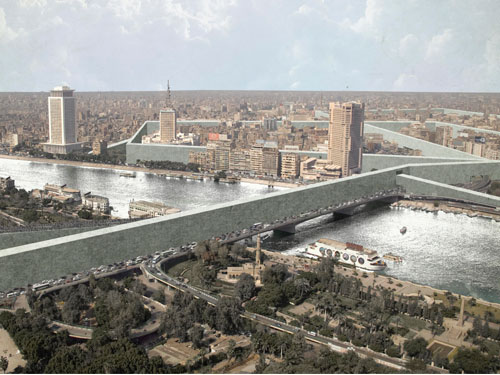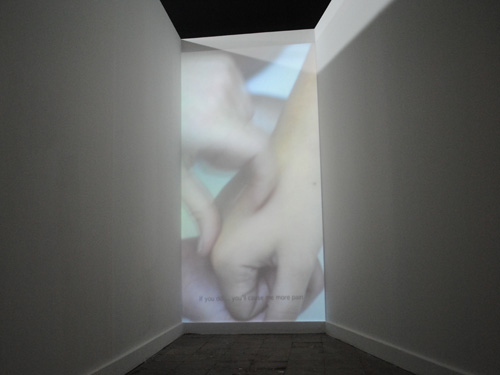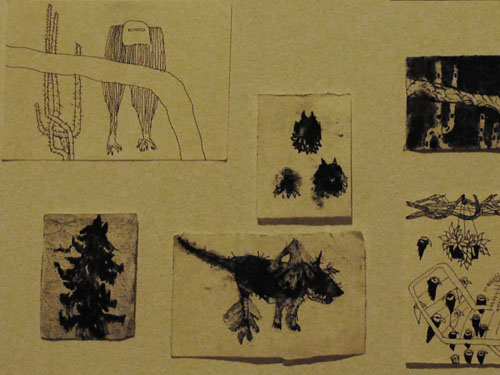
Out of all the work that went into making PhotoCairo 5, by far the hardest thing for me was writing the curatorial text you see here and in the pocket guide. I wrote three drafts — a long, rambling rant shared months ago with numerous artists; a later, more “professional,” but fairly pretentious text; and, finally, the one you see now, on the advice of a friend sanely removed from the situation, that less is more.
The truth is it’s hard to tell you what PhotoCairo 5 is “about.” Before you stop reading, there is good reason for this. PhotoCairo 5, if it wants to claim anything at all, proposes that art and curating needn’t primarily be “about” anything.
Instead, I wanted to make a show with art that can make us feel and react — work that transmits feelings as much as it attempts to represent events.
The reason to restate this now comes from some of the issues experienced in the last two years in Egypt’s art scene, and some abroad. After January last year, we sensed some sort of connection between cultural production and revolution, but became immediately caught up with all the problems of representation: how to make an accurate artistic representation, how to make one that does not cheapen the revolution, how to make one that includes all its voices.
Other problems followed this: how to avoid turning the Egyptian artist into a fetish for foreign visitors, or even worse, how to prevent their work being appropriated by the remnants of the regime. So even the existence of this debate was in danger of flattening this exceptional revolution into just another event to be sensitively represented.
Samir ElKordy’s “Monument of the Buzzwords,” one of the first works you see in PhotoCairo 5, confronts us with this problem. His piece, over several digital images and texts, imagines a monument built by remnants of the old regime — an impossible monument, in a sense. It envisions the appropriation of both art and revolution in a way we all fear, and scales it up until it overtakes the reality of the city.
As representations of revolution go, this one is a warning. No wonder the safest option for artists has seemed to be to maintain a critical distance from “revolutionary” art. In some ways, there is an irony in attempting to confirm the revolution’s meaning, when the revolution was all about breaking meaning apart.
Rather than thinking of it as an event, it could be viewed as a mental space in which everything was being questioned by millions of minds at once, and so passionately that it seemed like this was the only possible reality. For me, art — whether about revolution or not — is most powerful when it opens up such exceptional possibilities.
The PhotoCairo 5 symposium at the Goethe Institute this Saturday will attempt to handle this exact set of questions. Critical distance from artistic representation may well be the best way to avoid exploiting these events, but we lose an incredible opportunity when we don’t ask ourselves what kind of creative consciousness exists in moments of extreme upheaval.
One attempt to address these questions is Andre Romao’s work “The Dancing Plague,” featured at the symposium. In 1518 in Strasbourg, a woman started dancing uncontrollably. Though she wanted to stop, she couldn’t, and when people tried to help her, they found themselves also dancing.
Eventually, about 400 people were caught up in a dancing hysteria, unable to stop. The event killed numerous people, is historically verified, and has never been satisfactorily explained.
“The Dancing Plague” tells us this story while showing us eerie images of the present-day European Parliament, which is also in Strasbourg. The parliament would claim to be a temple of the forces of reason, discourse and democracy — a strange contrast to the story of the helpless people of 1518 in thrall to their uncontrollable bodies.
Perhaps, suggests Romao, they were so unable to handle their reality rationally that other forces took over. Such an amazing story tells us that irrational, immaterial forces can be as powerful as more easily representable ones.
Through numerous works across PhotoCairo 5’s venues, less rational states of consciousness will be explored — whether it’s manipulation between two people, a traumatic memory, paranoia, or surprising associations.
The subtitle, “more out of curiosity than conviction,” hopefully guides us toward the project’s core instinct: Rather than operating on the idea of representational certainty, we might respond to a stranger set of instincts.
It comes from the film “Videograms of a Revolution” by Harun Farocki, which is a film about the Romanian revolution of 1989. I was watching it and asking myself, why, 18 months after the start of the Egyptian revolution, am I so moved by this film, when none of the documentaries about the Egyptian revolution that I have seen seem to achieve this?
Farocki manages not only to tell us about the events, but also the soft motivations of those who recorded them. When a state cameraperson begins to film an unauthorized protest, Farocki points out that the cameraperson went against instructions to do so.
To me, the most important part of this footage is not just the event on the screen, but its status as a document of one person’s decision to acknowledge another reality, when that reality was officially “impossible.” This gesture, says Farocki, was made “more out of curiosity than conviction.”
And yet this moment, registering a tiny, inner change in one person, could be exactly what causes revolutions. PhotoCairo 5 modestly calls attention to these small, soft, powerful forces.
Mia Jankowicz is the curator of PhotoCairo 5 and artistic director of the Contemporary Image Collective.
PhotoCairo 5 opens tonight at 8pm in three downtown venues: The Contemporary Image Collective, 22 Abdel Khalek Tharwat St.; The Townhouse Gallery, Hussein al-Ma’mar Pasha St., off Mahmoud Basiony St.; and the Mahmoud Basiony shopfront. The symposium will be held on 17 November from 10:30 am to 6pm at the Goethe Institut Kairo, 5 al-Bustan St., downtown, Cairo.
This piece appears in Egypt Independent's weekly print edition.





